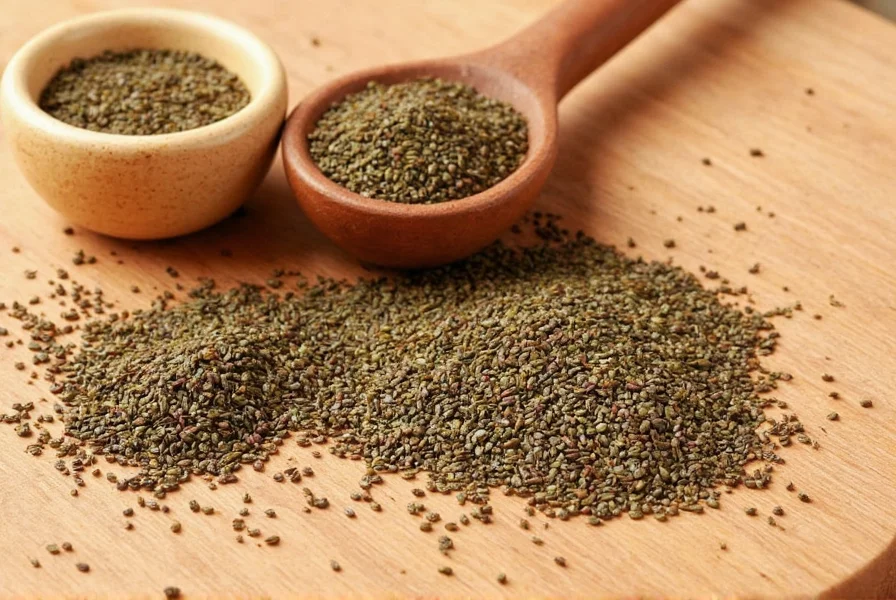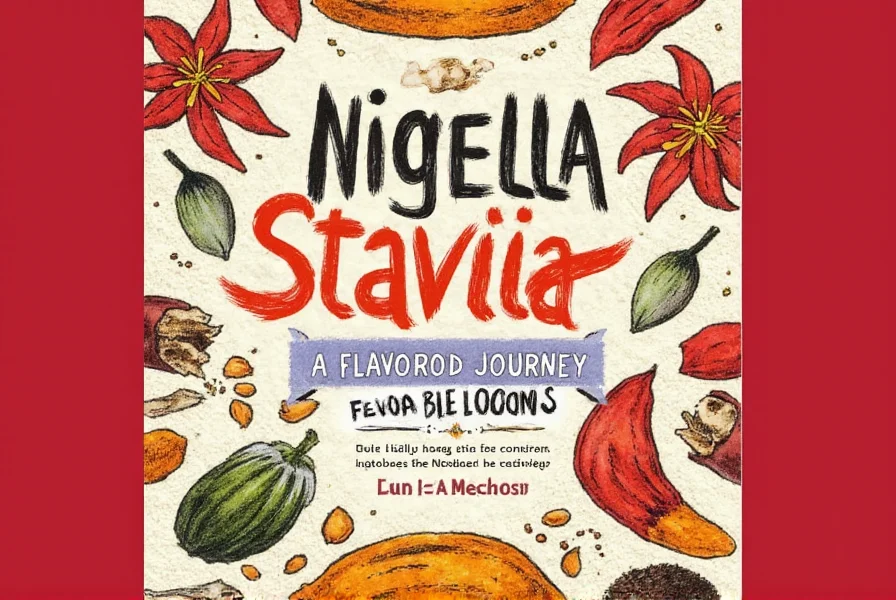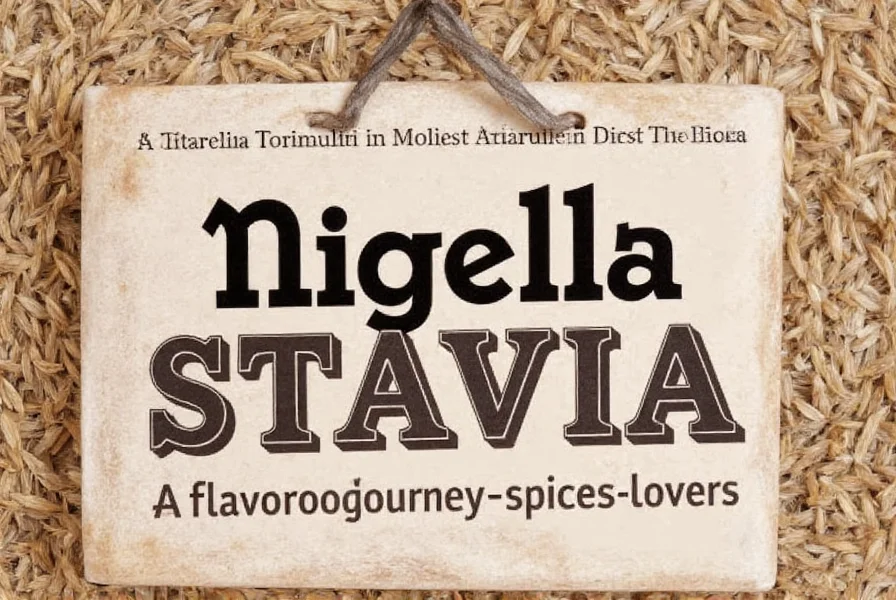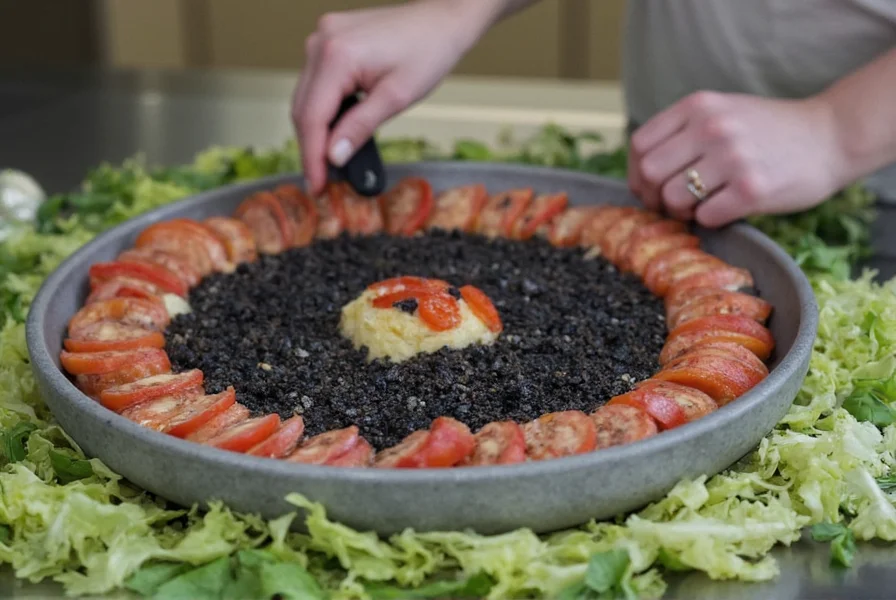Table of Contents
What is Nigella Sativa?
Nigella sativa, commonly known as black cumin or kalonji, is a small black seed widely used in Middle Eastern, Indian, and North African cuisines. Despite its name, it is botanically unrelated to true cumin (Cuminum cyminum) but belongs to the Ranunculaceae family. These tiny seeds have a unique flavor profile—nutty, slightly bitter, with hints of oregano and thyme—and are prized for their versatility in both savory and sweet dishes. Native to the Mediterranean region and Indian subcontinent, nigella sativa has been used for centuries not only as a spice but also in traditional medicine.

Flavor Profile of Black Cumin
Nigella sativa offers a complex, aromatic taste that is distinct from other spices. It is less pungent than black pepper and less earthy than cumin, instead providing subtle notes of oregano, thyme, and a gentle bitterness that enhances rather than overwhelms dishes. This unique profile makes it ideal for adding depth without dominating other ingredients.

Cooking Uses and Tips
Here are practical ways to incorporate nigella sativa into your cooking:
- Breads and Baking: Add whole or ground nigella seeds to bread dough for a nutty aroma. Commonly used in Middle Eastern flatbreads like naan and paratha, often combined with sesame seeds.
- Stews and Curries: Toast whole seeds before adding to lentil soups, vegetable curries, or meat stews for enhanced earthy notes.
- Salads and Dressings: Sprinkle ground nigella on salads or mix into olive oil-based dressings for a distinctive kick.
- Spice Blends: A key ingredient in garam masala and za'atar, adding complexity to spice mixes.
- Desserts: Use sparingly in honey-based desserts, cookies, or cakes for an unexpected aromatic twist.

Pro tip: Toast whole seeds lightly before grinding to intensify their flavor. Start with small amounts (1/4 teaspoon per dish) and adjust to taste, as nigella is potent.
| Product Type | Key Features | Advantages | Best Uses | Target Audience | Recommended Occasions |
|---|---|---|---|---|---|
| Whole Nigella Seeds | Small, black, natural texture | Longer shelf life; versatile for toasting or raw use | Breads, stews, spice blends | Chefs, home cooks, spice enthusiasts | Everyday cooking, special occasions |
| Ground Nigella | Fine powder with concentrated flavor | Quick to incorporate; ideal for sauces and baking | Baking, dressings, quick meals | Busy cooks, home bakers | Quick meals, desserts |
| Organic Nigella Seeds | Free from synthetic pesticides | Healthier option; premium quality | Organic recipes, wellness-focused dishes | Health-conscious individuals | Special diets, clean eating |
Nigella Sativa vs. Other Spices
Nigella sativa has distinct characteristics compared to similar spices:
| Spice | Flavor Profile | Best Used In | Similar Spices |
|---|---|---|---|
| Nigella Sativa | Nutty, slightly bitter, oregano/thyme hints | Breads, curries, spice blends | Cumin, caraway, fennel |
| Cumin | Earthy, warm, smoky | Curries, roasted vegetables, chili | Caraway, coriander |
| Caraway | Earthy, sweet, licorice-like | Pickles, sausages, rye bread | Nigella sativa, cumin |
| Fennel | Sweet, anise-like | Italian dishes, seafood, teas | Nigella sativa, cumin |

Health Benefits
Traditionally used in Ayurvedic and Middle Eastern medicine, nigella sativa is valued for potential anti-inflammatory and antioxidant properties. Studies suggest benefits for digestion and immune support, though research is ongoing. Always consult a healthcare provider before using it for medicinal purposes, especially if pregnant or taking medications. Culinary use in normal amounts is generally safe.
Frequently Asked Questions
Based on common inquiries from spice enthusiasts and professional chefs, here are answers to the most frequently asked questions about nigella sativa:
What exactly is nigella sativa, and how is it different from regular cumin?
Nigella sativa (commonly called black cumin or kalonji) is botanically unrelated to true cumin (Cuminum cyminum). It belongs to the Ranunculaceae family, while cumin is in the Apiaceae family. Nigella seeds are smaller, black, and triangular with a nutty, oregano-like flavor, whereas cumin has larger, curved brown seeds with a warmer, earthier taste.
How should I store nigella seeds to maintain freshness?
Store whole nigella seeds in an airtight container in a cool, dark place. They retain flavor for up to 2 years. Ground nigella lasts about 6 months. For maximum shelf life, refrigerate or freeze whole seeds. Discard if they develop a musty smell.
Are there any health benefits associated with nigella sativa?
Traditional medicine uses nigella sativa for anti-inflammatory and antioxidant properties. Some studies suggest digestive and immune support benefits, but it's primarily a culinary spice. Always consult a healthcare provider before using it medicinally, especially during pregnancy or with existing health conditions.
Can I substitute nigella sativa if I don't have it on hand?
No perfect substitute exists, but you can approximate its flavor by combining equal parts cumin and caraway with a pinch of dried oregano. For Middle Eastern dishes, za'atar works well; for Indian recipes, mustard seeds with fennel may suffice. Nigella's unique character is hard to replicate entirely.
Is nigella sativa safe for everyone to consume?
Nigella sativa is safe in culinary amounts. However, concentrated extracts may interact with medications. Pregnant women should avoid medicinal doses due to potential uterine stimulation effects. Always start with small amounts to check for allergic reactions.










 浙公网安备
33010002000092号
浙公网安备
33010002000092号 浙B2-20120091-4
浙B2-20120091-4